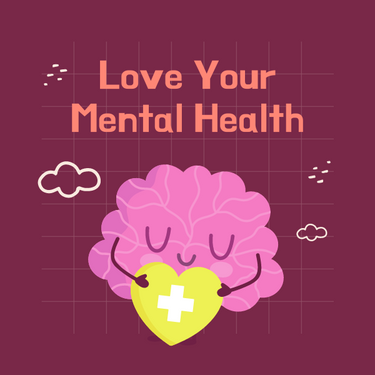
Positive thinking, also known as optimism, refers to a mental attitude that focuses on the good in any situation. It involves interpreting life events in a positive way rather than a negative one. Positive thinking has the ability to shape your life in ways you may not have thought possible. It has the power to change the way you view adversity, help you embrace challenges, and motivate you to create a better life. Positive thinking goes beyond just feeling good; it can improve both mental and physical health. In the following sections, we'll dive deeper into the science behind positive thinking, the effects on mental and physical health, and practical ways you can cultivate a more positive mindset.
Science Behind Positive Thinking

Positive thinking not only makes us feel good, but it also has a strong scientific basis. The Psychology of positive thinking highlights that our thoughts and emotions are interconnected. When we think positively, our brain releases dopamine and serotonin, which promote positive emotions and reduce stress. On the other hand, negative thoughts trigger the release of cortisol, which can lead to chronic stress, resulting in various physical and mental health problems. Moreover, the Neuroscience behind positive thinking reveals that our brains are neuroplastic, which means that they can transform and change based on what we think and do. Hence, when we practice positive thinking, we can rewire our brains, making positive thoughts come naturally and more automatically. This reinforces the creation of new and positive neural pathways. The law of attraction states that the energy you put out into the universe is what you attract in return. It means that if we keep positive thoughts, we will attract positive experiences towards us. Positive thinking is not just a mental process but is also based on the idea of energy and vibration. Energy travels through our thoughts, making them more powerful than we realize. In a nutshell, positive thinking not only affects our minds but also our bodies and the type of experiences we attract toward us. Hence, it's essential to develop a positive mindset and practice it daily to enjoy its benefits thoroughly.
Effects of positive thinking on mental health
Positive thinking has a profound impact on our mental health. It can reduce stress and anxiety, improve self-esteem, enhance our relationships, and lead to better decision-making. When we maintain a positive outlook, we tend to handle difficult situations better and respond to challenges in a more productive way. We also tend to attract positive experiences into our lives, which further reinforces our positive mindset. Reducing stress and anxiety is one of the most significant benefits of positive thinking. When we think positively, we tend to see problems as solvable rather than overwhelming, reducing the impact of stress on our lives. Improved self-esteem is another benefit of positive thinking. It enables us to see ourselves in a positive light, leading to better self-acceptance and a more confident attitude. Positive thinking also helps us build positive relationships with others, which is an essential part of our mental well-being. Lastly, better decision-making is a by-product of positive thinking, as it allows us to see things from a different perspective and make informed choices. It's important to remember that cultivating positive thinking takes practice and dedication, and it's not always easy. Identifying negative thought patterns, practicing gratitude, surrounding yourself with positive people, and embracing challenges are all ways to maintain a positive mindset. Ultimately, adopting a positive outlook on life can have a significant impact on our mental health and overall well-being.
Effects of positive thinking on physical health
Positive thinking not only impacts your mental health but also has a positive impact on your physical health. Research has shown that positive thinking can reduce the risk of heart disease by lowering blood pressure, and cholesterol levels, and releasing stress from the body. It boosts the immune system by reducing stress hormones such as cortisol, which if produced in large quantities can suppress the immune system, increasing the risk of infections. Positive thinking also reduces pain perception by releasing endorphins, which are natural painkillers. Next time you feel a headache or cramps, try focusing on positive thoughts. Positivity is the key to a healthy lifestyle. With reduced stress levels, improved physical health, and a better outlook on life, can you really refuse positive thinking? It's like a pill, but no pharmacy has it. You need to create it yourself!
How to cultivate positive thinking
Cultivating positive thinking can be challenging, but with practice, it becomes easier. Start by identifying negative thought patterns and replacing them with positive ones. For example, instead of saying “I can’t do this,” say “I’ll give it my best shot.” Another helpful practice is gratitude. Take time each day to list three things you’re grateful for. This helps shift your focus from what you lack to what you have. Surrounding yourself with positive people can also make a huge difference. Their energy and optimism can be infectious and improve your own mindset. Finally, embrace challenges instead of shying away from them. See them as opportunities to grow and learn. With these practices, you can transform your mindset and create a more positive outlook on life.
Challenges of positive thinking
Let's face it, positive thinking is not always easy. It can be a real challenge, especially when faced with setbacks or negative situations. The danger of toxic positivity is very real and can make matters worse. Ignoring negative emotions or trying to suppress them with fake positivity can lead to more harm than good. Sometimes, setbacks happen and it's okay to acknowledge them. Instead of ignoring them, it's better to deal with them and find ways to move forward. Remember, positivity doesn't mean ignoring reality. It means being aware of the situation and finding ways to make the best of it.
Conclusion
So, now that you understand the benefits of positive thinking, the question is, how do you cultivate it? The first step is to identify your negative thought patterns and replace them with positive ones. Practice gratitude and surround yourself with positivity. Embrace challenges and learn from setbacks. Remember, positivity is a journey, not a destination. Keep going and don't give up. With time and practice, you will start to see a positive impact on your mental and physical health. So, let's embrace positivity and see where it takes us!













.png)


Write a comment ...